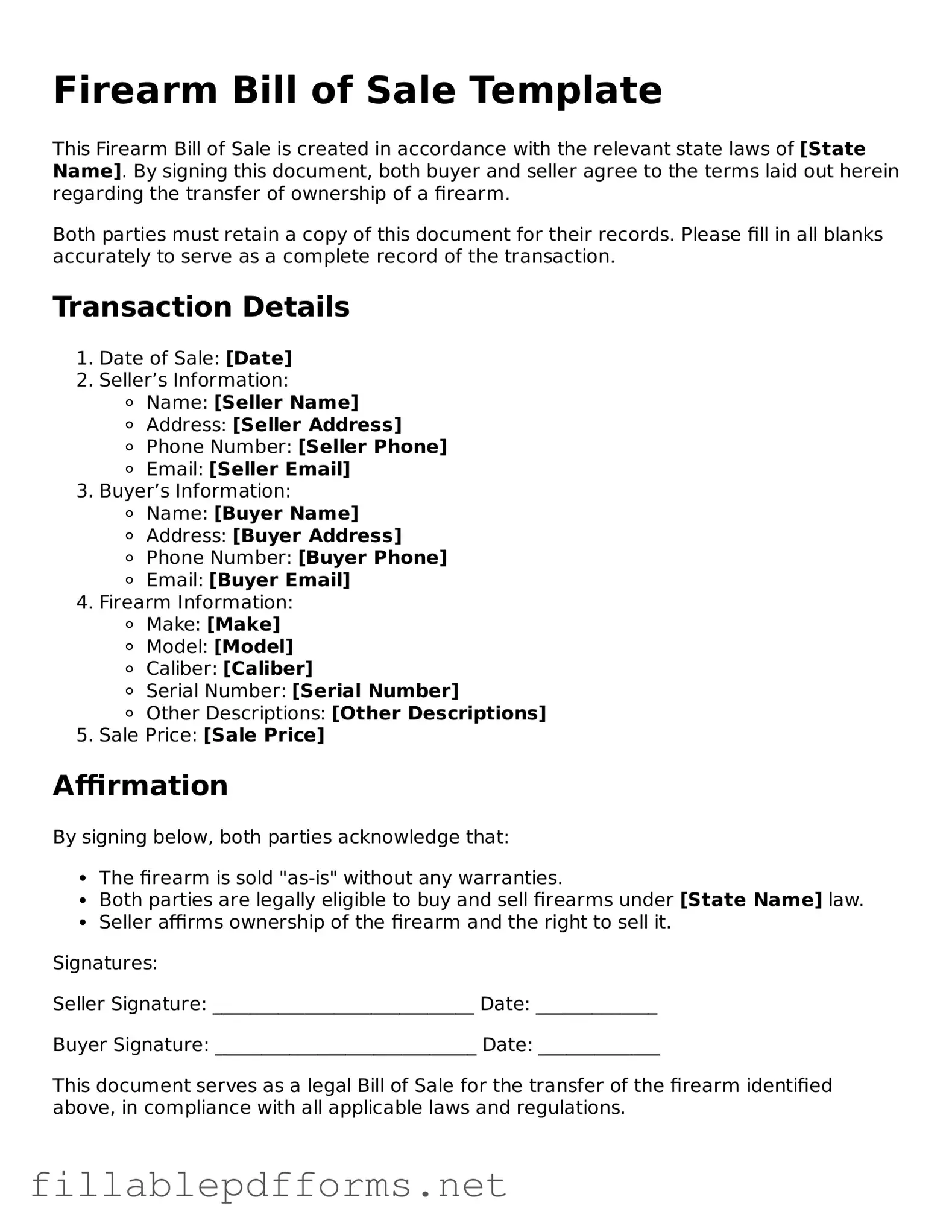When buying or selling a firearm, it’s crucial to have the right documentation in place to ensure a smooth and legal transaction. One of the key documents involved in this process is the Firearm Bill of Sale form. This form serves as a written record of the sale, detailing important information such as the names and addresses of both the buyer and seller, the make and model of the firearm, and the sale price. It also typically includes the serial number of the firearm, which helps to verify its identity and ownership history. Both parties should sign the document, which not only provides proof of the transaction but also helps to protect them in case of future disputes. Additionally, having a Firearm Bill of Sale can be beneficial for legal compliance, as it demonstrates that the sale was conducted in accordance with applicable laws. Whether you are a seasoned gun owner or new to firearms, understanding the importance of this form can help ensure that your transaction is secure and legitimate.
